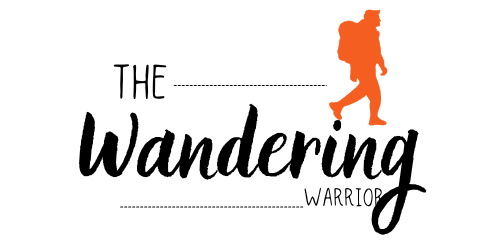Are you tired of the same old relationship struggles, the misunderstandings that seem to happen again and again? Well, you’re not alone. The good news is, there’s a way to unlock the secrets of your relationship dynamics and pave the way to a happier, more fulfilling love life. It all begins with understanding your attachment style.
In this friendly and creative guide, we’ll embark on a journey into the fascinating world of attachment styles. We’ll break down the complex psychology into easy-to-understand terms, explore how different attachment styles affect your relationships, and offer practical advice on how to navigate the maze of love. So, fasten your seatbelts, because we’re about to dive deep into the art of mastering your attachment style.
The ABCs of Attachment Styles
Let’s start with the basics – attachment styles 101. Think of these as the unique love languages that dictate how you bond with others.
Secure Attachment: The Foundation of Healthy Bonds

In the intricate dance of relationships, secure attachment is akin to having a reliable North Star guiding your way. It’s the gold standard, the ideal to aspire to, and the cornerstone of healthy and fulfilling connections. But what exactly does it mean to have a secure attachment style, and why is it so essential in the world of relationships?
At its core, secure attachment is all about feeling confident and grounded in your relationship. It’s about trust – trust in yourself, trust in your partner, and trust in the idea that healthy bonds can weather the storms of life. People with a secure attachment style possess a unique ability to navigate the delicate balance between intimacy and independence, and they do so with ease and grace.
The Characteristics of Secure Attachment
- Confidence in Intimacy: Individuals with a secure attachment style have a deep-seated confidence in their ability to connect emotionally with their partner. They understand that opening up, sharing vulnerabilities, and being emotionally present are not signs of weakness but rather the cornerstones of intimacy. This confidence allows them to cultivate deep, meaningful, and satisfying connections with their loved ones.
- Comfort with Independence: Securely attached individuals appreciate the importance of maintaining their independence within a relationship. They understand that healthy partnerships thrive when both partners can pursue their individual interests, goals, and passions. This comfort with independence doesn’t lead to emotional distance; instead, it fosters a sense of autonomy and self-assuredness within the relationship.
- Belief in the Goodness of Self and Others: A fundamental aspect of secure attachment is a genuine belief in the inherent goodness of oneself and others. Secure individuals possess a positive self-image and believe that they are worthy of love and care. Simultaneously, they extend this belief to their partners, trusting that their loved ones have good intentions and are dependable sources of support.
- Graceful Conflict Resolution: Conflict is a natural part of any relationship, but securely attached individuals approach it with a sense of grace and understanding. They don’t shy away from addressing issues, yet they do so with empathy and respect. Secure attachment fosters effective communication skills, making it easier to navigate disagreements and find mutually satisfying resolutions.
Anxious-Preoccupied Attachment: When Love Feels Like a Rollercoaster

Have you ever found yourself in a relationship where love feels like a thrilling but unpredictable rollercoaster ride? One moment you’re soaring high with euphoria, and the next, you’re plummeting into uncertainty and anxiety. If this resonates with you, it’s possible that you have an anxious-preoccupied attachment style.
The Rollercoaster of Emotions
In the world of attachment styles, the anxious-preoccupied attachment style is marked by intense emotions and a constant craving for reassurance and closeness. This attachment style can make your love life feel like a whirlwind of highs and lows, often leaving you wondering where you stand in your relationship.
The Characteristics of Anxious-Preoccupied Attachment
- Fear of Abandonment: At the core of anxious-preoccupied attachment is a deep-seated fear of abandonment. Individuals with this attachment style may harbor a constant worry that their partner will leave them or lose interest. This fear can lead to a hypersensitivity to relationship cues and perceived threats.
- Intense Emotional Responses: Anxious-preoccupied individuals tend to experience emotions with great intensity. Love is passionate, but so are anxiety, jealousy, and insecurity. Small relationship hiccups can trigger significant emotional responses.
- Constant Need for Reassurance: One of the defining features of this attachment style is the constant need for reassurance and validation from their partners. Anxious-preoccupied individuals often seek frequent affirmations of love and commitment, hoping to ease their underlying fears.
- Overthinking and Rumination: The tendency to overthink and ruminate about the relationship is prevalent in this attachment style. Individuals may obsessively analyse texts, conversations, and actions, searching for hidden meanings or signs of trouble.
The Anxious Attachment Recovery Workbook™ is here to guide you towards a transformative journey of healing and personal growth.
Picture yourself developing meaningful connections and pursuing your goals with confidence.
This workbook is your key to breaking free from anxiety and fear, allowing you to create the love-filled future you deserve.
Dismissive-Avoidant Attachment: Balancing Independence and Intimacy

Independence is a valuable trait in any relationship. It signifies self-reliance, strength, and the ability to stand on one’s own two feet. However, when independence becomes the predominant focus, it can tip the scales in ways that impact the dynamics of attachment and emotional intimacy. This is precisely where the dismissive-avoidant attachment style comes into play.
Individuals with a dismissive-avoidant attachment style often prioritise self-sufficiency over emotional closeness. They may appear as strong, self-reliant individuals who have it all together, but beneath the surface lies a complex web of emotions and challenges that influence their approach to relationships.
The Characteristics of Dismissive-Avoidant Attachment
- Self-Sufficiency as a Shield: Dismissive-avoidant individuals have a remarkable capacity for self-sufficiency. They are comfortable with solitude and rarely seek emotional support from others. This self-reliance can serve as a protective shield, guarding against the vulnerability that comes with emotional intimacy.
- Avoidance of Emotional Expression: Expressing emotions, especially deep and vulnerable ones, can be challenging for those with a dismissive-avoidant attachment style. They may downplay their feelings or compartmentalise them, keeping their emotional world hidden from their partners.
- Difficulty Trusting Others: Dismissive-avoidant individuals may struggle with trusting others fully. They often harbor doubts about the reliability of partners and may hesitate to lean on them during times of need. This hesitation can create emotional distance within the relationship.
- Fear of Dependency: Dependency is viewed with apprehension by those with a dismissive-avoidant attachment style. They fear becoming too reliant on their partners or being seen as needy, which can lead to a reluctance to engage in deep emotional connections.
Do you always find yourself hoping and praying that your relationship will work while never actually taking the time to enjoy it for everything it is?
Are you someone who struggles to trust your partner, constantly overthinks, and ultimately risks pushing them away?
These types of feelings are common, but that doesn’t mean you should have to endure them for the rest of your life. What I want to do right now is show you that when you come to terms with who you are and how your relationships work, you’ll be able to break free from the underlying anxiety that always seems to be there.
Fearful-Avoidant (DisorganiSed) Attachment: Healing Past Wounds

Attachment styles are like blueprints for how we connect with others, but what happens when the blueprint itself is a complex puzzle? That’s precisely the territory of the fearful-avoidant attachment style, also known as disorganised attachment. It’s a unique blend of emotional complexity that combines elements of anxious and avoidant tendencies. In this section, we’ll dive into the enigmatic world of fearful-avoidant attachment, exploring its roots and the pathways to healing past wounds for a more secure future.
Understanding Fearful-Avoidant Attachment
Fearful-avoidant attachment is often described as a paradoxical attachment style because it combines the yearning for emotional closeness (typical of anxious attachment) with a deep-seated fear of vulnerability and intimacy (characteristic of avoidant attachment). This creates a challenging emotional landscape that can be perplexing for both individuals with this attachment style and their partners.
The Characteristics of Fearful-Avoidant Attachment
- Ambivalence Towards Intimacy: Fearful-avoidant individuals desire close and meaningful relationships but are also deeply afraid of the potential hurt and rejection that can accompany emotional intimacy. This ambivalence often leads to a push-pull dynamic in relationships.
- Past Trauma and Unresolved Issues: Fearful-avoidant attachment is often rooted in past trauma or challenging life experiences. These experiences can include early attachment disruptions, neglect, abuse, or significant losses. The emotional wounds from these experiences may continue to affect relationships in adulthood.
- Difficulty Trusting: Due to their past experiences, fearful-avoidant individuals may struggle with trust issues. They may be cautious about opening up to others and fear that they will be hurt or betrayed.
- Inconsistency in Behavior: Fearful-avoidant individuals may exhibit inconsistency in their behavior within relationships. They may alternate between seeking emotional closeness and withdrawing from it. This inconsistency can be confusing for both themselves and their partners.
Develop healthier and better relationships today! Experience improved relationship fulfillment and unlock the best strategy for secure attachment styles in your relationships.
Do you want to develop better and healthier relationships with your loved ones? Would you like to understand yourself better and be more satisfied with your life? Are you looking to break free from being avoidant and start opening up more to create long-lasting and fulfilling relationships? Then this book was made just for you.
The Magic of Compatibility
Now, let’s talk about relationships where attachment styles intertwine, creating a mesmerising dance of connection.
Secure + Secure: The Bliss of Mutual Trust
In the intricate dance of love and relationships, few partnerships radiate as much harmony and contentment as that of two securely attached individuals coming together. When two secure individuals unite, the foundation of their connection is built upon mutual trust, understanding, and a profound sense of emotional safety. It’s a relationship that feels like a warm embrace on a cold winter’s day—a sanctuary where love flourishes naturally and effortlessly.
The Beauty of Secure Attachment
Before we delve into the dynamics of a secure + secure relationship, let’s first understand what secure attachment entails. Secure attachment is characterised by a deep-rooted sense of self-worth, trust in others, and the ability to navigate the delicate balance between intimacy and independence. Those with secure attachment styles typically have a positive view of themselves and their partners, which fosters emotional stability and resilience.
Anxious + Avoidant: Navigating the Push-Pull Dance
Picture this: An anxious individual, craving emotional closeness and reassurance, meets an avoidant partner, someone who values independence and self-sufficiency above all else. It’s a combination that’s often likened to fire and ice—a seemingly mismatched pairing. But beneath the surface, these relationships hold a unique complexity, with both challenges and opportunities for growth. In this section, we’ll delve into the dynamics of anxious + avoidant relationships, exploring the intricacies of the push-pull dance.
The Dance of Anxious + Avoidant Attachment
Anxious + avoidant relationships are characterised by a dynamic where one partner seeks emotional closeness and reassurance (the anxious individual), while the other values space and independence (the avoidant partner). This contrasting attachment style dynamic can create a push-pull dance that can feel confusing and challenging.
Secure + Anxious: Providing Comfort and Assurance
In the intricate tapestry of love and relationships, different attachment styles come together, each contributing its unique thread to the story. When a secure partner meets an anxious one, it’s like the steady anchor meeting the eager sail—a dynamic where security and reassurance become the cornerstones of the connection. In this section, we’ll explore the vital role secure partners play in soothing and supporting their anxious counterparts, creating a relationship where love can flourish.
The Power of a Secure Attachment
Before we delve into the dynamics of secure + anxious relationships, let’s first understand what secure attachment brings to the table. Secure attachment is characterised by a profound sense of self-worth, trust in others, and an ability to balance intimacy and independence. Secure individuals are like emotional anchors, providing stability and comfort to those around them.
Dismissive + Fearful-Avoidant: Cracking the Tough Exterior
In the vast landscape of relationships, there are pairings that stand out as intriguing puzzles to be unraveled. One such combination is the union of dismissive and fearful-avoidant individuals. While less common than other attachment style pairings, dismissive + fearful-avoidant relationships come with their own set of complexities and enigmas. In this section, we’ll embark on a journey to delve deep into the intricate dynamics of these relationships.
The Uniqueness of Dismissive + Fearful-Avoidant Pairings
Dismissive attachment styles are characterised by a strong emphasis on self-sufficiency and independence, often at the expense of emotional intimacy. On the other hand, fearful-avoidant attachment styles combine elements of anxious and avoidant tendencies, creating a complex blend of yearning for closeness and fear of vulnerability.
A groundbreaking book that redefines what it means to be in a relationship.’ – John Gray, PhD., bestselling author of Men Are from Mars, Women Are from Venus.
By reading this book, you’ll discover how to deal with your fears, overcome negative thoughts, relieve stress, and stop your overthinking for good.
Finding Your Path to Relationship Bliss

Now that we’ve unraveled the mysteries of attachment styles, it’s time to put your newfound knowledge to use.
Building Security in Insecure Times
In the realm of human emotions and relationships, security is the cornerstone upon which trust, intimacy, and lasting connections are built. It’s a reassuring feeling that allows us to navigate the unpredictable waters of life with confidence. No matter where you start on the attachment style spectrum, whether it’s anxious, avoidant, or a blend of both, the good news is that it’s possible to build a more secure attachment and cultivate healthier relationships. In this section, we’ll provide practical tips and insights to help you nurture trust and connection, even in the most insecure times.
Understanding the Journey Towards Security
Building security in your relationships is not a destination but a journey—a continuous process of self-discovery, growth, and conscious effort. It’s about recognising your attachment style, understanding how it influences your behavior and expectations, and actively working to develop a more secure attachment.
Practical Tips for Nurturing Trust and Connection
- Self-Awareness: Begin by gaining a deep understanding of your attachment style. Reflect on your past relationships and childhood experiences to identify patterns and triggers. Self-awareness is the first step towards change.
- Open Communication: Communication is the lifeline of healthy relationships. Practice open and honest communication with your partner(s). Share your thoughts, feelings, and needs openly, and encourage them to do the same.
- Embrace Vulnerability: Building trust often requires vulnerability. Allow yourself to be emotionally vulnerable with your partner(s). Share your fears, insecurities, and desires. Vulnerability fosters intimacy.
- Set Boundaries: Establish clear boundaries in your relationships. Boundaries are a form of self-care that protect your emotional well-being. Communicate your boundaries to your partner(s) and respect theirs.
- Mindful Listening: Practice mindful listening when your partner(s) express themselves. Give them your full attention, and seek to understand their perspective. Avoid interrupting or making assumptions.
- Seek Support: Don’t hesitate to seek support from a therapist or counselor experienced in attachment issues. Professional guidance can provide valuable insights and strategies for personal growth and relationship improvement.
- Challenge Negative Beliefs: If you have negative beliefs about yourself or relationships, work on challenging and reframing them. Replace self-criticism with self-compassion and replace mistrust with a willingness to give and receive love.
- Cultivate Self-Esteem: Building self-esteem is crucial. Engage in self-care practices that make you feel good about yourself. Surround yourself with people who uplift and support you.
- Practice Empathy: Develop empathy for yourself and your partner(s). Understand that everyone has their own attachment wounds and insecurities. Approach each other with compassion and empathy.
- Couples Therapy: Consider couples therapy if you and your partner(s) are struggling to improve your attachment dynamics. A trained therapist can guide you through the process of building a more secure attachment together.
Embracing Change and Growth
Building security in your relationships is not a linear path, and setbacks may occur. It’s essential to approach this journey with patience and self-compassion. Recognise that change takes time, and setbacks are opportunities for learning and growth.
Ultimately, the pursuit of security in relationships is a noble endeavor. It’s an investment in your emotional well-being and the quality of your connections with others. By practicing self-awareness, open communication, vulnerability, and empathy, you can gradually shift towards a more secure attachment style. In the process, you’ll foster trust, deepen your connections, and navigate even the most insecure times with resilience and grace.
Effective Communication: The Key to Relationship Success
In the intricate tapestry of human connections, communication stands as the vibrant thread that weaves understanding, trust, and intimacy. It’s the lifeblood that courses through the veins of any relationship, shaping its course and defining its quality. Effective communication—open, honest, and empathetic—is the cornerstone of lasting and fulfilling bonds. In this section, we’ll embark on a journey to explore how the art of communication can fortify your relationships and lead to success in matters of the heart.
The Vital Role of Communication
Communication is the heartbeat of any relationship, whether it’s romantic, familial, or platonic. It serves as the conduit through which emotions, thoughts, needs, and desires are conveyed. Effective communication is not just about words; it’s about creating an environment where both verbal and non-verbal expressions are understood and respected.
Openness: Laying the Foundation
Openness in communication entails a willingness to share one’s thoughts, feelings, and experiences honestly. It’s about creating a safe space where partners can express themselves without fear of judgment or rejection. Open communication fosters trust and vulnerability, enabling both parties to feel seen and heard.
Honesty: Building Trust Brick by Brick
Honesty is the cornerstone upon which trust is built. It involves sharing the truth, even when it’s uncomfortable. Honest communication allows partners to build trust over time, knowing that they can rely on each other’s words and actions. It creates an atmosphere of authenticity, where pretenses are shed, and genuine connection thrives.
Empathy: The Bridge to Understanding
Empathy is the ability to understand and share in the emotions of another. It’s a critical element of effective communication, as it enables individuals to connect on a deeper level. When partners practice empathy, they acknowledge each other’s feelings and experiences without judgment. This acknowledgement fosters understanding and compassion, laying the groundwork for resolution and growth.
The Power of Active Listening
Active listening is a skill that transforms communication. It involves giving one’s full attention to the speaker, without interruptions or distractions. When partners practice active listening, they create a space where the speaker feels valued and respected. Active listening promotes genuine understanding, reduces misunderstandings, and helps prevent conflicts from escalating.
Conflict Resolution: Navigating Choppy Waters
In any relationship, conflicts are inevitable. Effective communication is essential for resolving conflicts in a healthy and constructive manner. When disagreements arise, partners can engage in empathetic listening, express their own perspectives without blame or accusation, and work together to find mutually beneficial solutions.
Setting Boundaries: Ensuring Respect and Comfort
Clear boundaries are vital for maintaining healthy communication. Partners should discuss and establish boundaries regarding personal space, emotional needs, and sensitive topics. Respecting each other’s boundaries is a sign of respect and consideration, creating an environment where both individuals feel safe and comfortable.
Growth Through Communication
Effective communication is not just a tool for resolving issues; it’s also a catalyst for personal and relational growth. Through open, honest, and empathetic communication, individuals can:
- Deepen Intimacy: Sharing thoughts, feelings, and vulnerabilities fosters emotional intimacy and a sense of closeness.
- Enhance Understanding: Effective communication helps partners understand each other’s perspectives, needs, and desires, reducing misunderstandings and conflicts.
- Strengthen Trust: Consistent and truthful communication builds trust over time, creating a solid foundation for the relationship.
- Resolve Conflicts: Conflicts are addressed and resolved more constructively, leading to mutual growth and learning.
- Foster Empathy: Practicing empathy in communication strengthens emotional bonds and encourages a supportive partnership.
Conclusion: The Art of Connection
In summary, effective communication is the art of connection—the conduit through which trust, understanding, and intimacy flow. It’s the key that unlocks the door to relationship success. By embracing openness, honesty, and empathy in your communication, you lay the foundation for lasting and fulfilling connections. In the dance of human relationships, communication is your most graceful partner, guiding you toward deeper bonds, shared growth, and the enduring beauty of connection.
Embracing Vulnerability: A Journey Towards Deeper Connection

In the intricate tapestry of human relationships, vulnerability stands as the bridge that connects hearts and souls. It’s the willingness to expose one’s true self—flaws, fears, and all—in the pursuit of genuine connection and intimacy. Vulnerability can be intimidating, even frightening, but it holds the power to unlock the door to more profound and meaningful connections. In this section, we’ll embark on a journey to explore how embracing vulnerability can lead to deeper and more fulfilling relationships.
The Courage to Be Vulnerable
Vulnerability is not a sign of weakness; it’s an act of courage. It involves opening yourself up to another person, showing your authentic self, and being honest about your emotions, desires, and insecurities. It’s a willingness to share the unvarnished truth, even when it feels uncomfortable or scary.
The Fear of Vulnerability
Many people fear vulnerability because it makes them feel exposed and at risk of rejection or judgment. It’s a natural human instinct to protect oneself from potential harm, but this self-protective instinct can also create barriers to authentic connection. When we shield ourselves from vulnerability, we may project an image of strength or invulnerability, but this facade can hinder the depth of intimacy we crave.
Vulnerability as a Catalyst for Connection
Embracing vulnerability is a catalyst for connection. Here’s how it can lead to more profound and meaningful relationships:
- Authenticity: Vulnerability allows you to be your authentic self. When you reveal your true thoughts, feelings, and experiences, you invite others to do the same. Authenticity fosters a sense of genuineness and realness in your connections.
- Trust: When you demonstrate vulnerability, it builds trust. It shows that you trust the other person enough to share your innermost thoughts and emotions. Trust is the foundation of deep and meaningful connections.
- Intimacy: Vulnerability is the pathway to intimacy. It enables you to connect with others on a deeper emotional level, forging bonds that go beyond surface interactions.
- Empathy: When you’re vulnerable, it encourages empathy from others. They can relate to your struggles, fears, and vulnerabilities, creating a sense of shared understanding and connection.
- Support: Vulnerability allows you to seek support when you need it most. It enables you to lean on others during challenging times, fostering a sense of belonging and care.
Overcoming the Fear of Vulnerability
Embracing vulnerability requires a willingness to confront the fear and discomfort that often accompany it. Here are some steps to help you overcome the fear of vulnerability and embrace it as a path to deeper connection:
- Self-Awareness: Begin by understanding your own fears and barriers to vulnerability. Reflect on your past experiences and beliefs that may have shaped your reluctance to be vulnerable.
- Start Small: You don’t have to dive into vulnerability all at once. Start by sharing smaller, less intimidating feelings or thoughts with someone you trust. Gradually work your way up to more significant disclosures.
- Choose the Right People: Not everyone deserves your vulnerability. Be discerning in selecting individuals whom you trust and feel safe with. Surround yourself with people who honor and respect your vulnerability.
- Practice Self-Compassion: Be kind to yourself as you navigate vulnerability. Remember that it’s a journey, and it’s okay to make mistakes along the way. Treat yourself with the same empathy you seek from others.
- Seek Professional Help: If fear of vulnerability significantly impacts your relationships or well-being, consider seeking support from a therapist or counselor. They can provide guidance and strategies for embracing vulnerability in a healthy way.
Conclusion: The Path to Deeper Connection
In summary, vulnerability is the path to deeper connection and more meaningful relationships. It takes courage to lower our defenses and allow others to see us as we truly are. But in doing so, we invite genuine connection, trust, and intimacy into our lives. Embracing vulnerability is not about shedding tears or revealing every detail of your life; it’s about showing your true self, imperfections and all, and allowing others to do the same. In the end, it’s through vulnerability that we create the most profound and authentic connections that enrich our lives and bring a sense of fulfillment and belonging.
A groundbreaking book that redefines what it means to be in a relationship.’ – John Gray, PhD., bestselling author of Men Are from Mars, Women Are from Venus.
By reading this book, you’ll discover how to deal with your fears, overcome negative thoughts, relieve stress, and stop your overthinking for good.
Conclusion
In the grand tapestry of love, attachment styles play a significant role. With the insights gained from this guide, you’re better equipped to understand, navigate, and transform your relationships. As you embark on your journey towards happier and healthier connections, remember that mastering your attachment style is not about changing who you are but about using your self-awareness to create more harmonious and fulfilling relationships.
Disclaimer
The information provided in this blog post is intended for informational purposes only. The author of this post is not a certified relationship coach or an expert in the field of psychology or related fields. The content presented here is based on research and general knowledge, and it should not be considered as a substitute for professional advice.
Every individual and relationship is unique, and what may work for one person or couple may not apply to another. If you are facing specific relationship issues or require personalised guidance, it is strongly recommended to seek assistance from a qualified relationship counselor, therapist, or mental health professional who can provide tailored advice and support.
The author and publisher of this blog post disclaim any liability for any actions taken or decisions made based on the information provided herein. It is essential to exercise your own judgment and consult with relevant experts when making decisions that impact your relationships and well-being.
Remember that healthy relationships are built on effective communication, mutual respect, and understanding. Use the information in this post as a starting point for self-awareness and personal growth, but always seek professional guidance when needed.
Bonus Content: Deep Dive into Individual Attachment Styles
Stay tuned for separate blog posts dedicated to each attachment style. We’ll provide more in-depth insights, real-life stories, and strategies for mastering your unique attachment style for even happier relationships.
Stay Connected:
We’re here for you every step of the way. Whether you have questions, breakthroughs to share, or stories of your own, we welcome you to stay connected with us.
Join our community, reach out, and let us celebrate your victories and support your challenges.
Affiliate Declaration
This post contains affiliate links. If you click on one of these links and make a purchase, I may receive a commission. You may also benefit from some links as you may receive a discount or free trial on some links.









